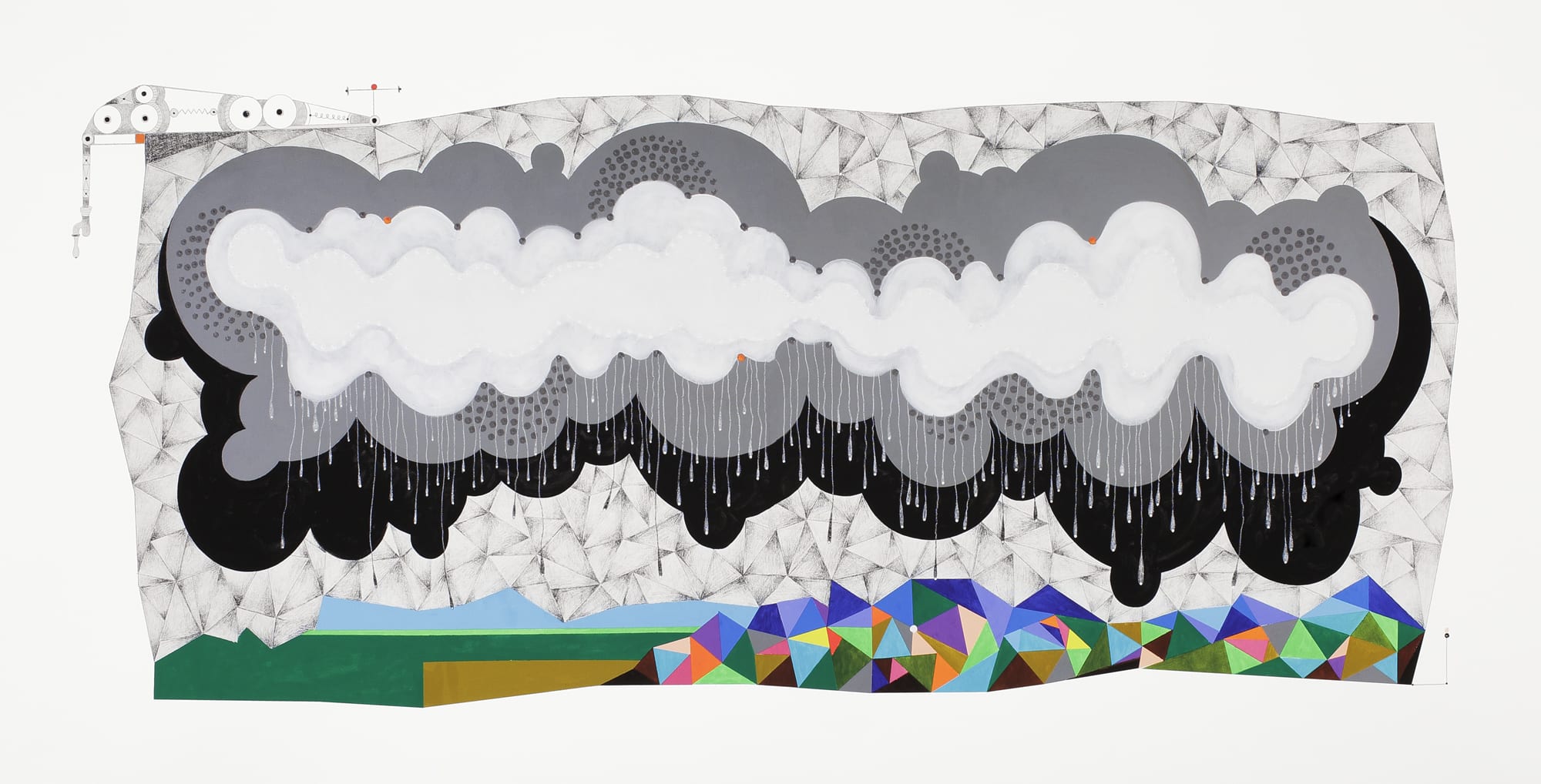Here at LUAG we are always ecstatic when Lehigh teachers integrate the collection into their curriculum. This past semester Susan Kart of Art, Architecture and Design required her ART 002 students to write a formal analysis on a piece of art from LUAG’s current exhibitions. Below are a few very thoughtful excerpts from an analysis by the student Zekia (Amanda) Alhout in which Zekia expresses her impressions of the Archival Pigment Print, Cloud, currently on view in our exhibition …Of The Americas.

“The presence of this crane to me symbolizes technology, advancement and construction. The crane’s wire encloses the work of the artist in a very irregular, however still precisely printed line. This could be interpreted as Cruz-Azaceta’s way of portraying the fact that technological and industrial advancement are what are holding the world together in one big piece and surrounding it as of now. It isn’t until we are able to take in the rest of the print that we can begin to formulate a hypothesis about how he feels about this scenario. One might think technological and industrial advancement in the world is a very positive thing, however Cruz-Azaceta doesn’t appear to be one of those people.”
“Because clouds normally cause rain to fall on the land of the earth, I made the assumption that the colored triangular shapes symbolize the earth and the landscape of the earth because they are not flat, but are all different heights and sizes. Some protrude from the top more than others do. Some areas are flatter like farmland, and some areas are higher up like the mountainous landscape. The earth, which Cruz-Azaceta depicts as a vibrant, diversified, and happy place, is getting rained on.”
“Knowing that Cruz-Azaceta uses his art to portray problems going on in the world, I assume that he symbolizes this sad and negative impact that technology and industry is having on the world by the rain in the print. He symbolizes the world as currently being happy and colorful. The rain is not actually touching the brightly colored shapes at the bottom yet, however it has crossed the path of the background’s grey triangles. Perhaps before the rain crossed the path of the background, the triangles they were not grey, but they were a more vibrant blue color like the sky. Once the rain hits the bottom, colorful world Cruz-Azaceta makes the viewer imagine that she might turn grey just like the rest of the print. The crane and wire traps the part of the print the artist has worked with almost as to say that industry and technology is trapping us.”
“To me, the piece looks like a one-thousand piece puzzle, or like a piece of glass that just hit the ground and is about to be shattered into a hundred or even a thousand different pieces. Everybody knows how delicate a puzzle is. Every piece is needed to make it complete but as soon as you move the wrong way or if the puzzle falls, it will completely shatter because all that is holding the pieces together is that they fit together and are in the correct position. This fragile state of the piece of art and puzzle is the same state that our earth is currently in according to Cruz-Azaceta’s print. It’s still being held together but not by anything that is definite.”
…Of The Americas is on view in the LUAG Lower Gallery located at 420 E. Packer Ave., Bethlehem, PA. 18015 in the Zoellner Arts Center on Lehigh University’s Asa Packer Campus. Gallery hours are: Wed – Sat, 11 a.m.- 5 p.m.; Sun 1 p.m.- 5 p.m.
